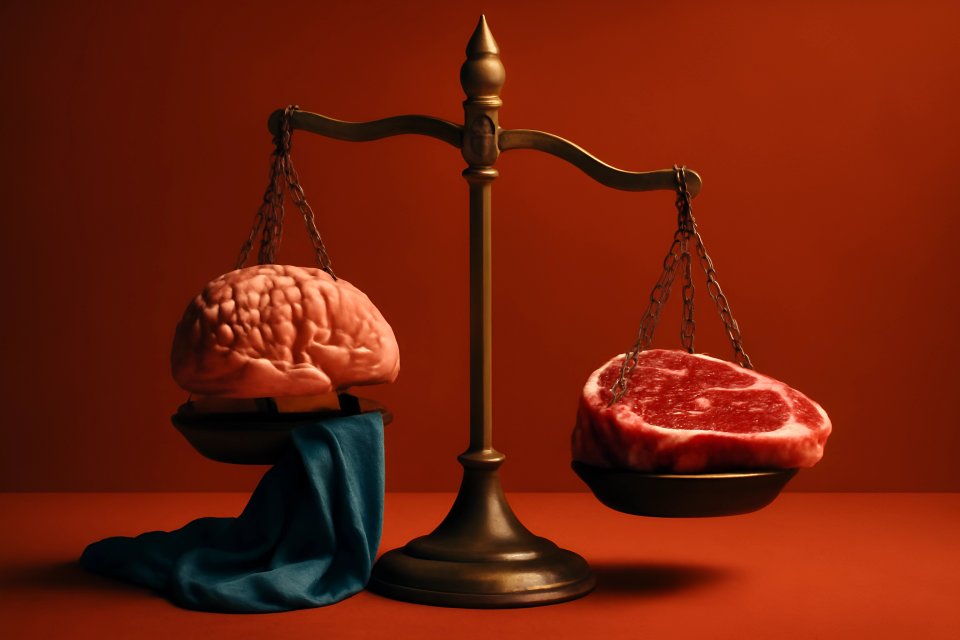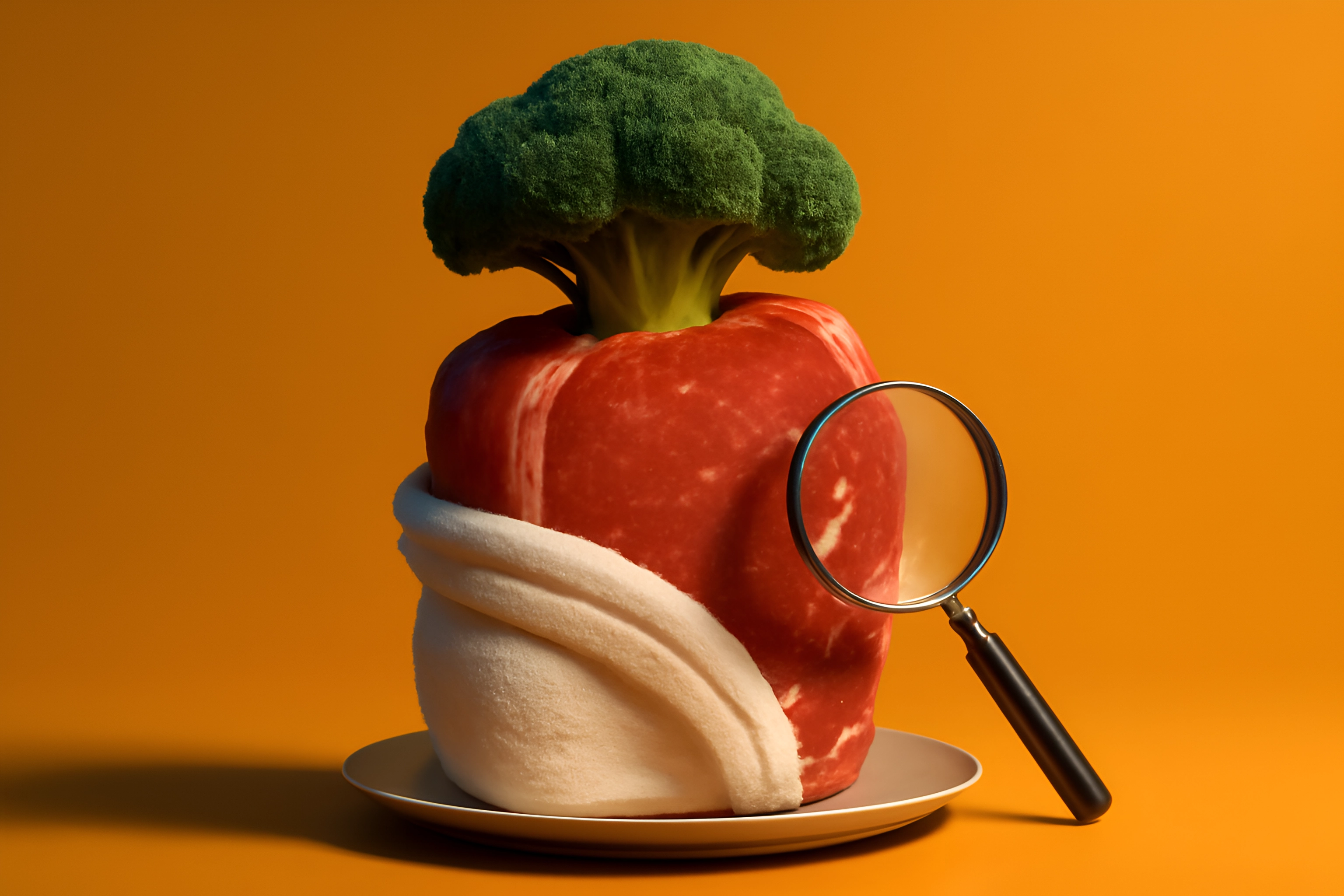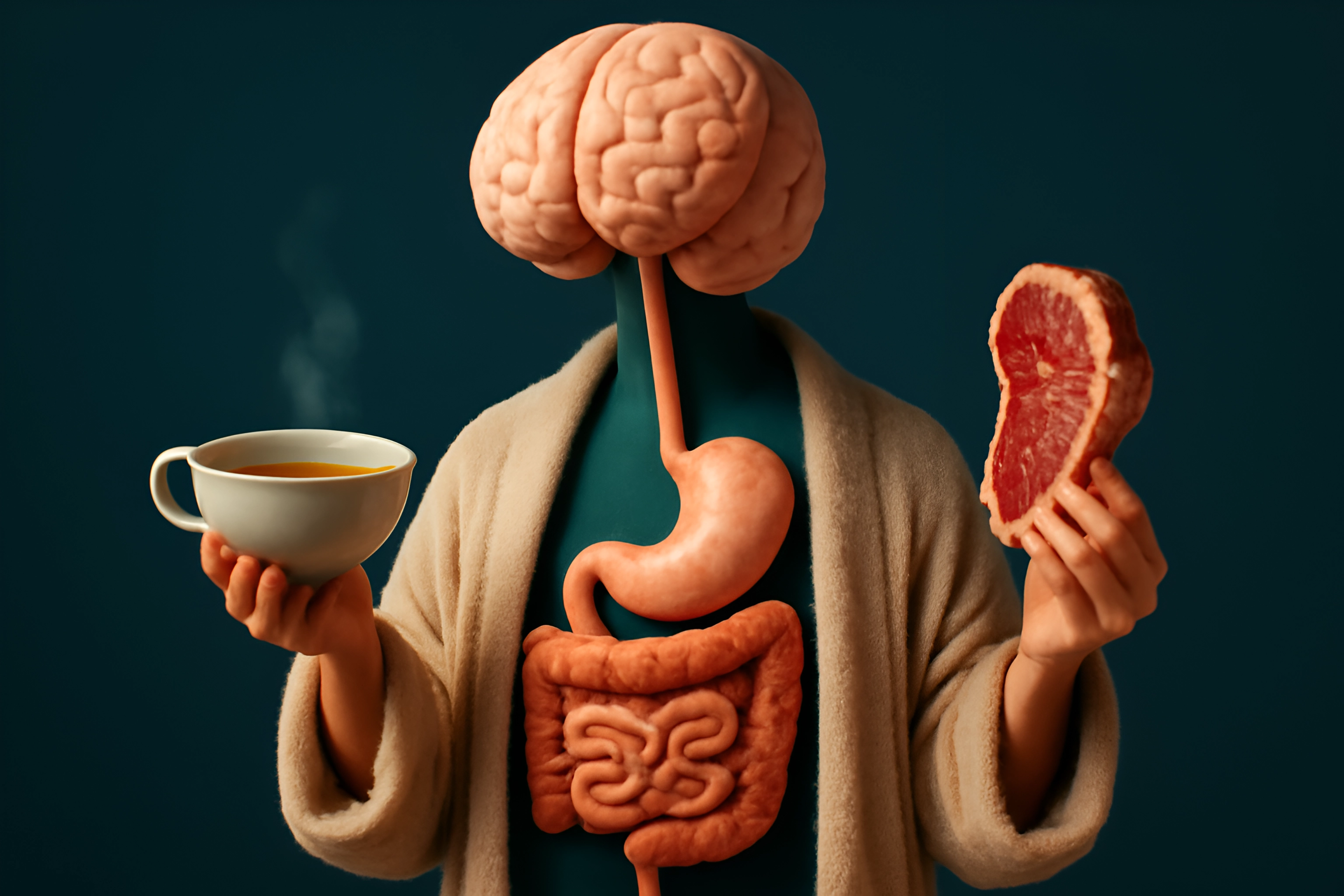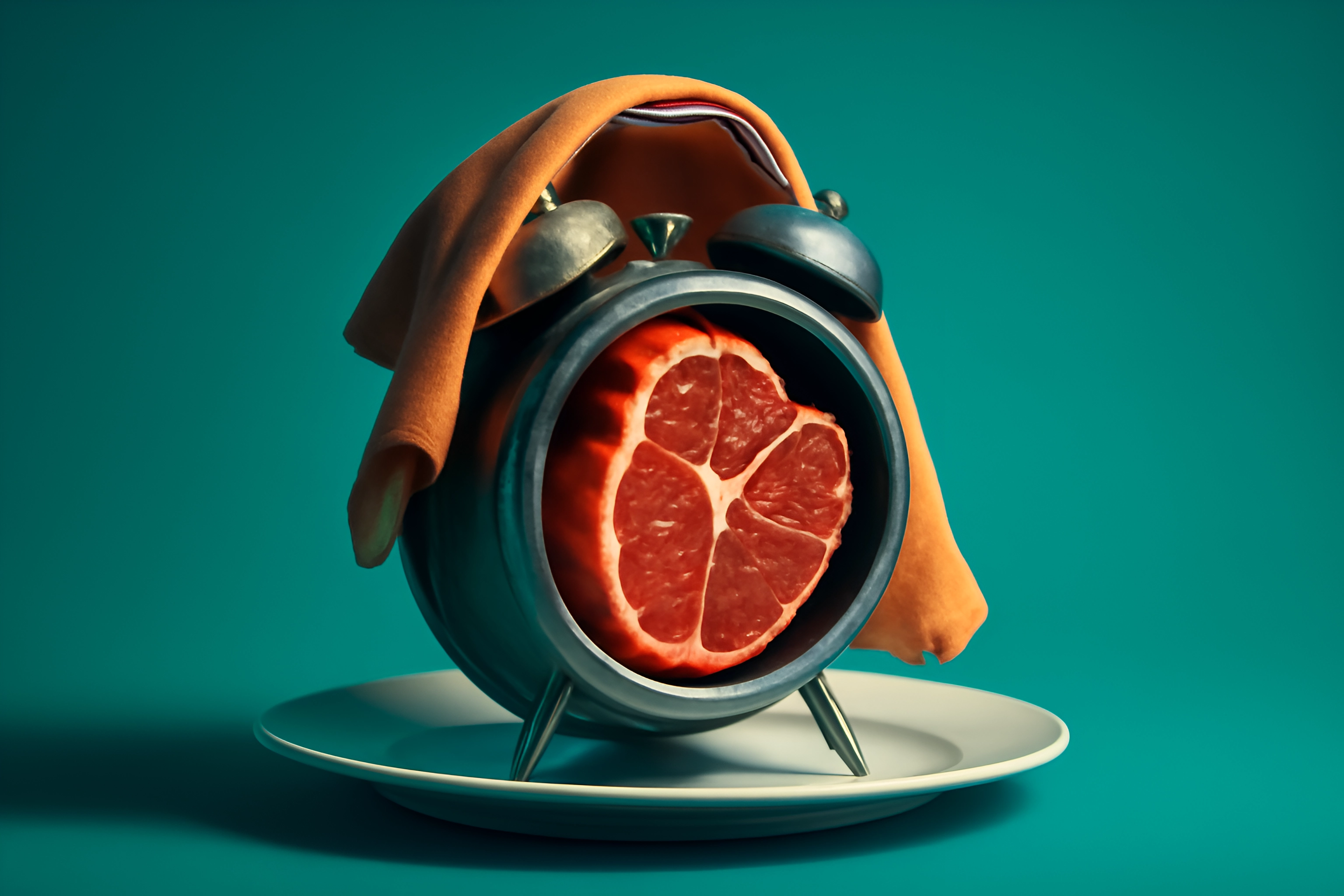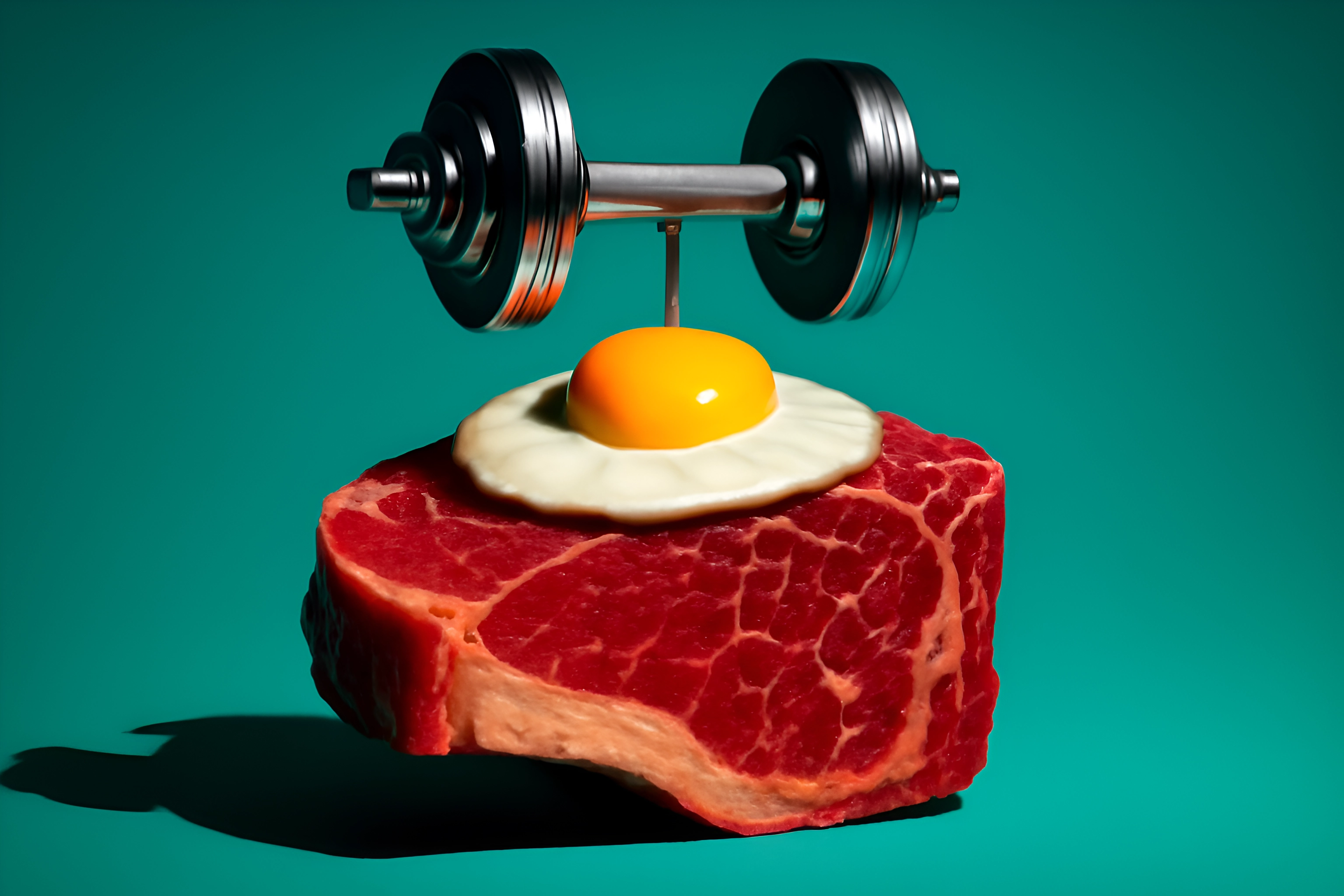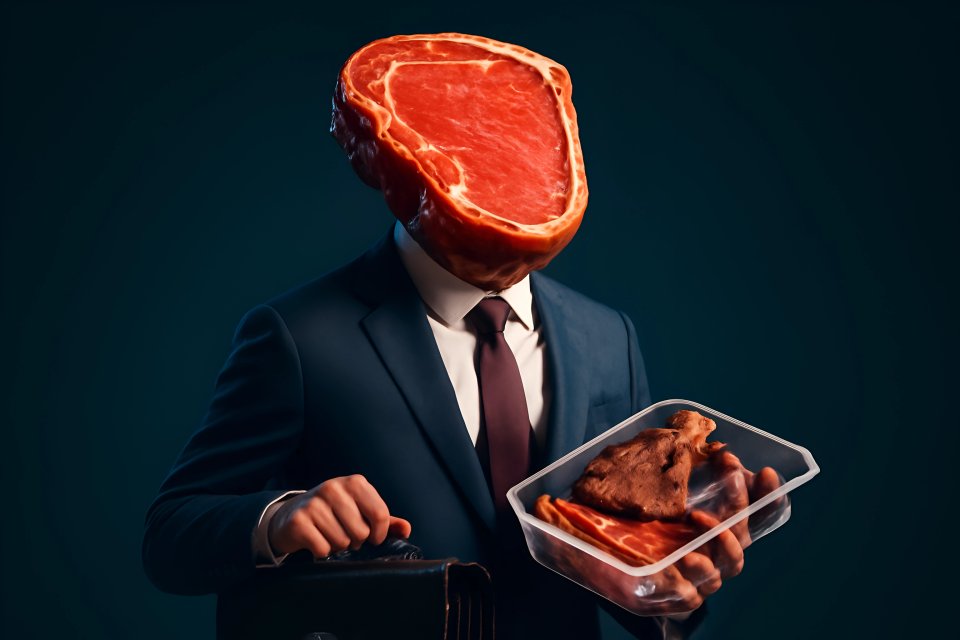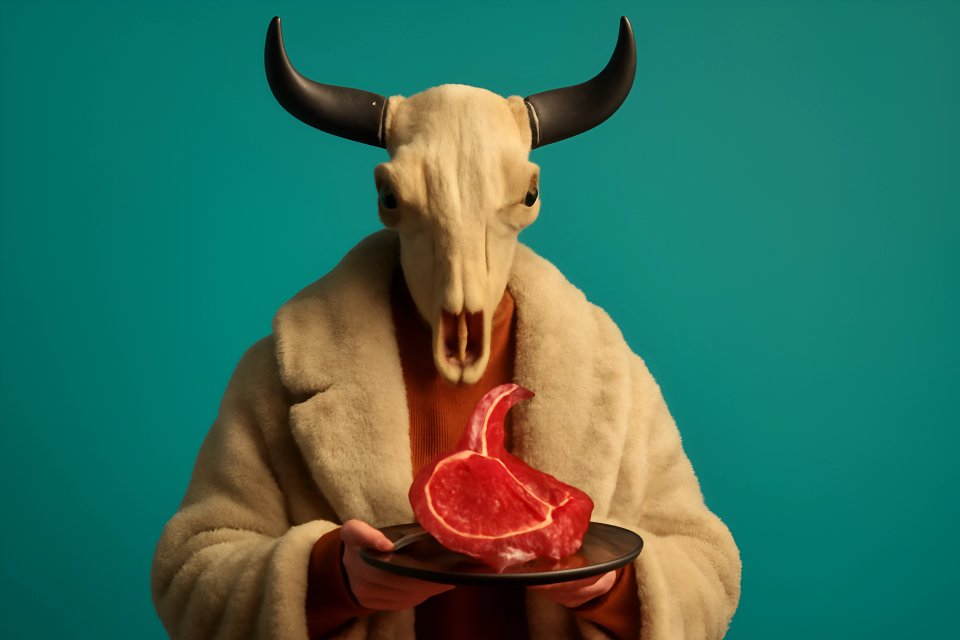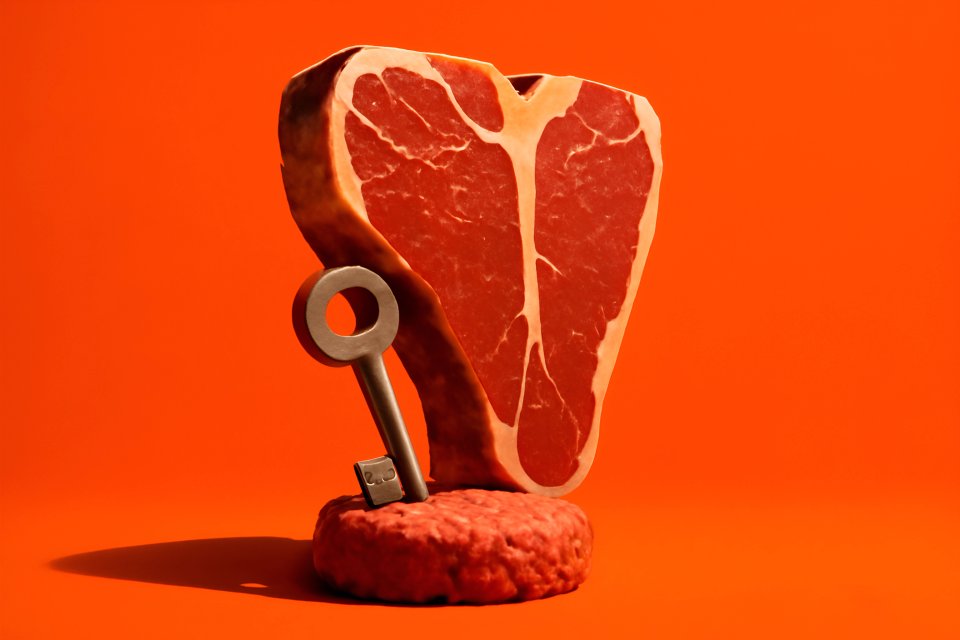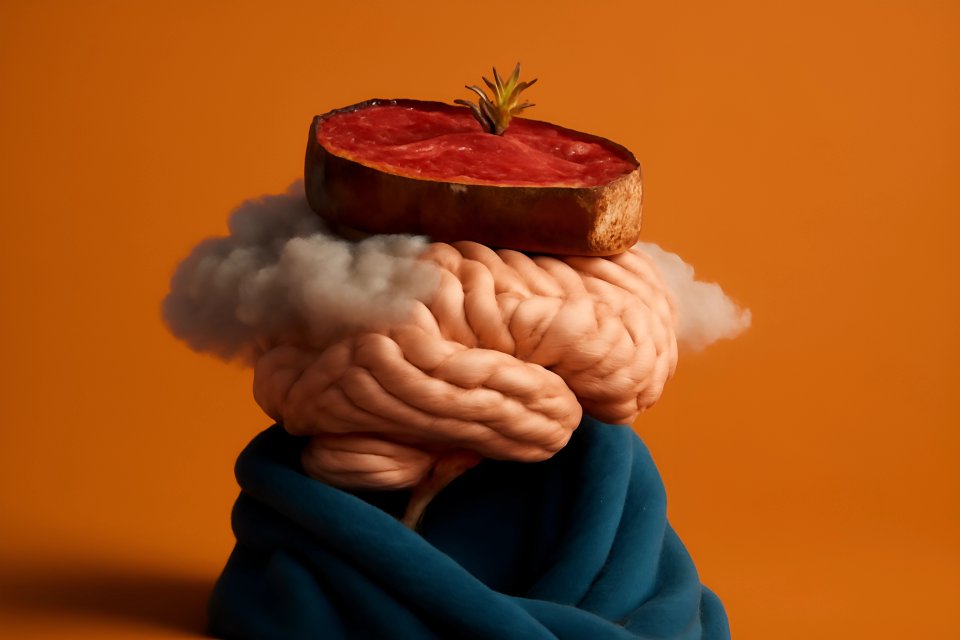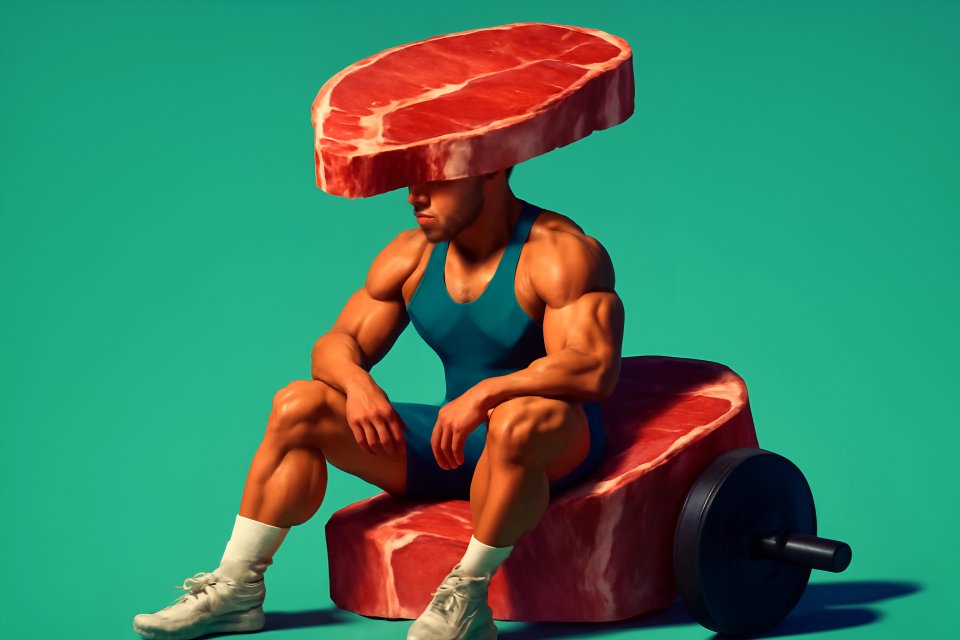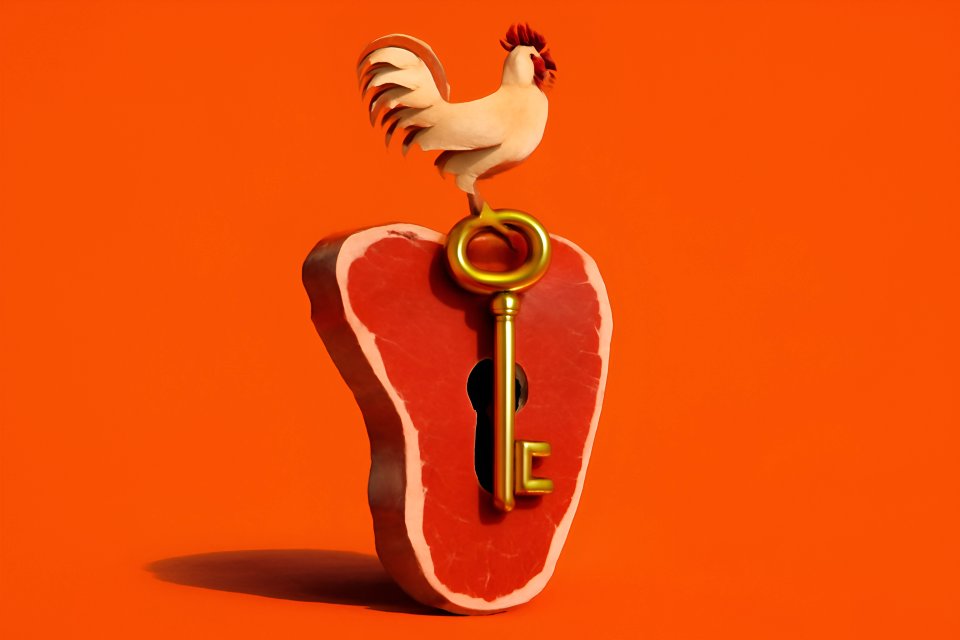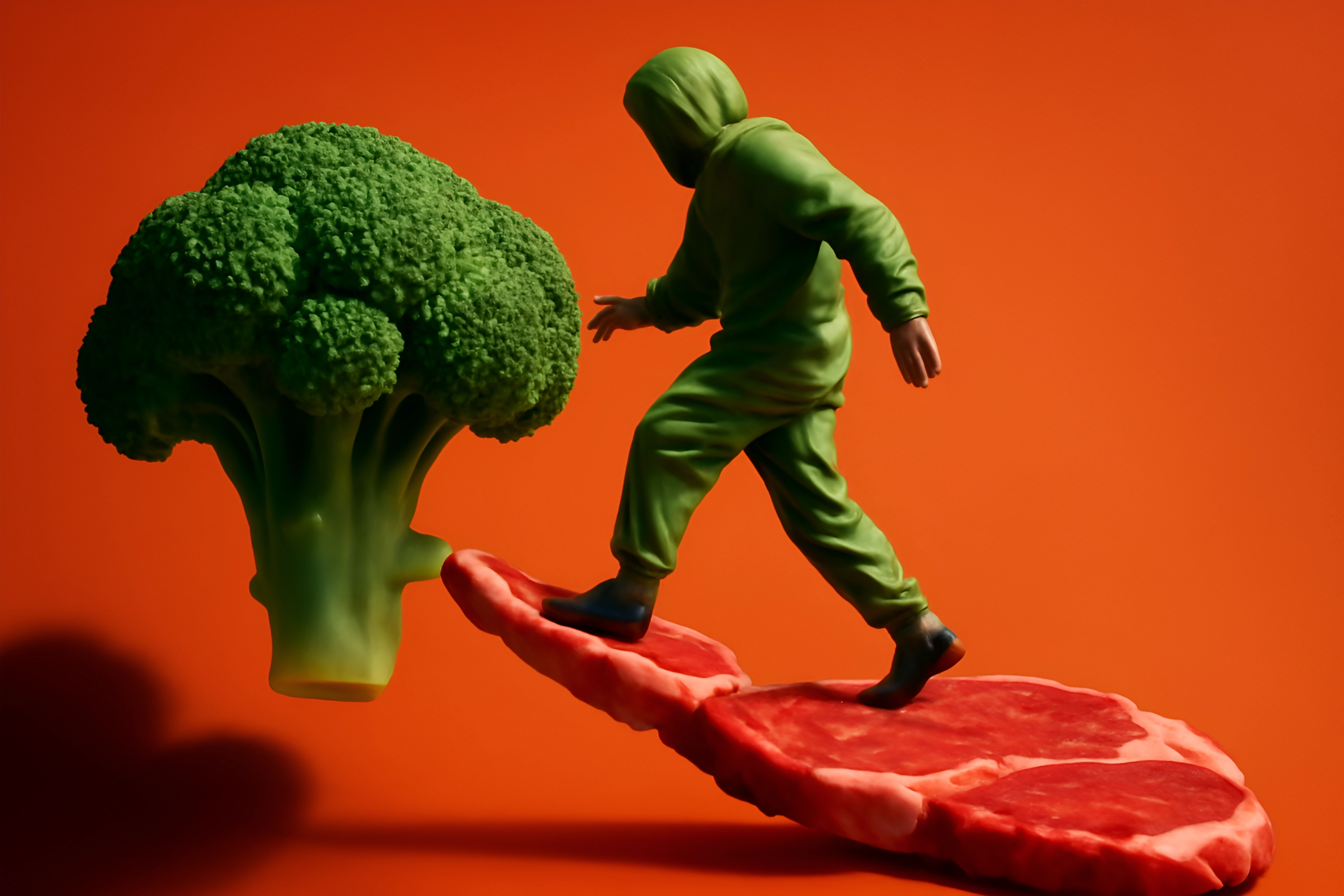
If you're reading this, you likely started your vegan journey with the best of intentions—for your health, the planet, or the animals. You committed fully, learned the rules, and believed in the promise of vibrant health. But what happens when the diet that was supposed to heal you leaves you feeling broken, tired, and confused?
This is a silent struggle for so many. It's more than just a diet change; it's a seismic shift in identity, a questioning of deeply held beliefs in the desperate pursuit of feeling well again. The courage it takes to even consider a path so radically different is immense, and you should be acknowledged for that bravery.
This post is your practical, non-judgmental roadmap. We're not here to criticize your past choices but to honor your desire to heal. This is your step-by-step transition from vegan to carnivore diet guide, designed to empower your future with a focus on healing, simplicity, and finally, listening to the profound wisdom of your own body.
The Crossroads: Why So Many Are Moving from Plant-Based to Animal-Based
You are not alone on this path. A growing number of people are finding themselves at this exact crossroads, where the plant-based promise has soured into a reality of declining health. This isn't a failure on your part; it's a biological reality that many are now confronting head-on.
The journey often begins with a collection of nagging symptoms that refuse to resolve, no matter how "clean" your vegan diet becomes. For many, this transition is driven by a desire to reclaim their vitality after years of feeling unwell. The decision to switch is a powerful act of self-advocacy, choosing personal health over prevailing ideology.
This movement is backed by compelling outcomes. A landmark study from Harvard researchers surveying over 2,000 carnivore diet followers found that 95% reported improvement in their overall health. This isn't just a fringe trend; it's a significant shift for those seeking profound healing.
The Decline in Health
It often starts subtly—persistent bloating, unpredictable digestion, or a constant feeling of being "puffy." For others, it's more severe: the onset or worsening of autoimmune conditions, crippling fatigue that coffee can't touch, and a persistent brain fog that clouds your thinking. You did everything right, you ate all the colors of the rainbow, yet your body feels like it's fighting against you.
These experiences are incredibly common. The very foods touted as staples—legumes, grains, and nuts—can be intensely irritating to a sensitive gut. This chronic, low-grade inflammation can become the root of widespread systemic issues that slowly erode your quality of life.
Nutrient Deficiencies
Despite meticulous planning and supplementation, nutrient deficiencies on a long-term vegan diet are a serious concern. Key nutrients like Vitamin B12, heme iron, zinc, and bioavailable omega-3s are either absent or poorly absorbed from plant sources. A 2024 study in PMC highlighted that a carnivore diet, by contrast, meets or exceeds the recommended levels for many of these crucial nutrients, which are vital for energy production, cognitive function, and immune health.
This isn't just about numbers on a lab report; it's about how you feel day-to-day. That persistent fatigue could be iron-deficiency anemia. The brain fog and low mood could be linked to a lack of B12. Your body is sending signals that it's missing the fundamental building blocks it needs to thrive.
The Anti-Nutrient Factor
Here lies a concept often overlooked in mainstream nutrition: plants have defense mechanisms. Compounds like oxalates, lectins, and phytates act as natural pesticides to deter predators, and they can wreak havoc on the human gut. These "anti-nutrients" can bind to minerals, preventing their absorption, and directly irritate the gut lining, contributing to leaky gut and inflammation.
For someone already struggling with digestive or autoimmune issues, a diet high in these compounds can be like throwing gasoline on a fire. Removing these plant-based irritants is a core principle of the HealingCarnivore approach. It's not just about what you add with animal foods; it's about what you remove.
Preparing for the Shift: Mindset, Pantry, and Planning
Before you take your first bite of meat, the most important work begins in your mind and your kitchen. A successful transition is built on a foundation of mental preparation and practical planning. This isn't just about changing what you eat; it's about creating an environment—both internal and external—that supports your healing.
Setting yourself up for success means addressing the emotional baggage tied to your old diet and physically clearing your space of the foods that no longer serve you. This proactive approach minimizes friction and makes the journey feel less like a struggle and more like a homecoming. It’s about making a conscious, empowered choice for your future self.
This preparation phase is critical for navigating the inevitable questions and doubts that may arise. By being intentional now, you build the resilience needed to see the transition through and reap the rewards on the other side.
The Mental & Emotional Prep
First, you must give yourself permission to let go of dogma. Your health journey is about bio-individuality, not ideology. What works for one person may not work for you, and that's okay. This is a courageous step toward honoring your body's unique needs.
Embrace radical self-compassion. You are not a "failed vegan." You are a person who is bravely choosing to heal, and that is a victory. Acknowledge the grief or guilt you may feel, and then gently release it.
Finally, find a new community. Seek out supportive ex-vegan, carnivore, or animal-based groups online. Surrounding yourself with people who understand your journey can make all the difference, transforming feelings of isolation into a sense of belonging and shared purpose.
The Practical Prep: Your Kitchen Overhaul
Now, let's get practical. It's time to overhaul your kitchen to create a healing sanctuary. This process is symbolic—out with the old, in with the new.
Start by donating or discarding the foods that can trigger inflammation and digestive distress. This includes grains, legumes, seeds, nuts, processed vegan foods, and especially industrial seed oils like canola, soy, and corn oil. The goal is to remove inflammatory triggers and simplify your environment.
Next, stock your kitchen with the foundational elements of your new way of eating. Focus on quality, as this is an investment in your health. Your first shopping list should be simple:
High-quality fats:Tallow, ghee, butterEssential minerals:Unrefined salt (like Redmond Real Salt)Nutrient-dense protein:Grass-fed ground beef, pasture-raised eggsGut-healing foods:Bone broth (store-bought or homemade), wild-caught fatty fish (salmon, sardines)
The Roadmap: Your Step-by-Step Guide to Reintroducing Animal Foods
With your mind and kitchen prepared, it's time to begin the physical vegan to carnivore transition. Your digestive system has adapted to a plant-based diet, so reintroducing animal foods requires a thoughtful, methodical approach to avoid overwhelming your system. There is no one-size-fits-all path, but the two methods below cover the most successful strategies.
The key is to listen intently to your body's feedback. Pay attention to your digestion, energy levels, and overall sense of well-being as you introduce each new food. This is your data, and it's more valuable than any external advice.
Remember, this is a marathon, not a sprint. Patience and consistency will be your greatest allies as you navigate this new terrain and rediscover what it feels like to be truly nourished.
Method 1: The Slow & Gentle Reintroduction (Recommended for Sensitive Guts)
This method is ideal for anyone who has been vegan for a long time or has a history of significant digestive issues. As clinical resources from the Cleveland Clinic suggest, a gradual transition allows your body to slowly rebuild the necessary digestive enzymes and stomach acid.
- Week 1: Bone Broth & Collagen. Start by sipping on high-quality bone broth throughout the day. This is incredibly gentle and rich in glycine and collagen, which help to soothe and repair the gut lining.
- Week 2: Eggs & Fish. Introduce well-cooked, pasture-raised eggs and fatty fish like salmon or sardines. These are generally easier to digest than red meat and provide a potent source of omega-3 fatty acids and choline.
- Week 3: Poultry & Well-Cooked Red Meat. Now you can add in well-cooked chicken, turkey, and finally, ground beef. Cooking meat thoroughly at this stage makes it easier for your digestive system to break down.
- Week 4+: Nose-to-Tail & Fat Adaptation. Once you're comfortable with muscle meats, you can begin to explore the incredible nutrient density of organ meats like beef liver. Focus on gradually increasing your fat intake to teach your body to use fat for fuel efficiently.
Method 2: The "Rip the Band-Aid" Approach
This method is for those who are highly motivated to eliminate all potential plant irritants immediately and are willing to endure a more intense adaptation period. It simplifies things down to the bare essentials, allowing for a quicker path to a baseline of healing.
This approach involves jumping straight into a simple protocol, often referred to as Beef, Salt, Water. For the first 30 days, you consume only fatty cuts of beef (like ribeyes or ground beef), high-quality salt, and water. This extreme elimination diet removes all variables, making it easier to identify how your body feels without any plant matter.
The caveat is significant: adaptation symptoms, such as fatigue or digestive changes, may be more pronounced with this method. It requires a strong commitment, but for some, the rapid reduction in inflammation and digestive distress is well worth the initial challenge.
Navigating the Bumps: Common Challenges & How to Overcome Them
No major life change is without its challenges, and this transition is no exception. Anticipating the physical, social, and emotional hurdles can empower you to navigate them with grace and confidence. Knowing what to expect and having solutions ready will keep you from getting discouraged.
Remember that your body is undergoing a profound shift. It's learning to digest new foods, utilize a different fuel source, and heal from years of inflammation and nutrient deficiencies. Be patient and treat yourself with the same kindness you would offer a friend on a healing journey.
This phase is where your commitment is tested. But by staying informed and prepared, you can overcome these temporary bumps and solidify your new foundation of health.
The Physical Adaptation
Digestive distress is one of the most common initial challenges. After years without meat, your body's production of stomach acid (Betaine HCL) and digestive enzymes (like pepsin) is likely low. This can lead to feelings of heaviness or bloating. The solution is to start with very small portions, chew your food thoroughly, and prioritize gut-soothing bone broth.
You may also experience the "adaptation flu," with symptoms like headaches, fatigue, and muscle cramps. This is almost always an electrolyte issue, not a "detox" reaction. As your body shifts to using fat for fuel, it flushes water and electrolytes. The fix is simple: generously salt your food with unrefined salt, stay well-hydrated, and consider a clean electrolyte supplement. For more detailed solutions, explore our Beginner's Guide to Overcoming Carnivore Diet Side Effects and Transition Challenges.
The Social & Emotional Hurdles
Prepare for criticism. Your decision may be met with confusion or judgment from friends and family still invested in a plant-based ideology. Critics often raise concerns about topics like heart health, a perspective shared by organizations like the British Heart Foundation. Have a few simple, non-confrontational scripts ready: "I'm doing this for my health," or "I'm experimenting to see what makes my body feel best."
It's also crucial to overcome any lingering guilt. You may have tied your identity and morality to your old diet. Reframe this: nourishing your body so you can show up fully in the world is a profound act of self-care and responsibility. You are choosing to heal, and there is no shame in that.
Thriving on Carnivore: Key Principles for Long-Term Success
Moving beyond the transition phase and into long-term success requires a shift in your nutritional philosophy. The principles of a healing carnivore diet are rooted in simplicity, nutrient density, and ancestral wisdom. This is where you stop just surviving and truly start thriving.
This way of eating is not about restriction; it's about providing your body with the most bioavailable, nutrient-dense foods on the planet. It's about freeing yourself from complex recipes, constant snacking, and food-related anxiety. Health, you will find, can be beautifully simple.
By embracing these core principles, you create a sustainable lifestyle that supports lasting vitality, mental clarity, and physical strength. This is the ultimate goal: to build a foundation of health that allows you to live your life to the fullest.
Fat is Your Fuel
This is perhaps the biggest mindset shift. On a carnivore diet, fat is your primary energy source. Aiming for a higher fat-to-protein ratio (often around 1:1 by weight or 70-80% of calories from fat) is key for stable energy, satiety, and hormonal health. Don't be afraid of the fat on your steak; it's the fuel your body has been craving.
Nose-to-Tail Nutrition
The concept of nose-to-tail eating is central to achieving true nutrient sufficiency. Organ meats, like beef liver, are nature's multivitamins. Just a few ounces per week can provide a powerful dose of Vitamin A, B12, copper, and other nutrients that are difficult to obtain elsewhere, directly addressing the deficiencies common in plant-based diets.
Simplicity is Key
One of the most liberating aspects of the carnivore diet is its simplicity. Your meals can be as easy as grilled steak, scrambled eggs, or a can of sardines. You are free from the burden of complicated meal prep and the endless search for "healthy" plant-based recipes. The focus is on the quality of your food, not the complexity of its preparation.
Listen to Your Body
This is the most important principle of all. Your body is the ultimate authority. Pay attention to your energy, digestion, mood, and sleep. These are your biofeedback markers, and they will guide you better than any book or expert. Learn to trust the signals your body is sending you.
Welcome to Your New Beginning
You've walked through the confusion, acknowledged the need for change, and now you have a practical roadmap to reclaim your health. From the mental prep and kitchen overhaul to the step-by-step reintroduction of animal foods, you are equipped to navigate this journey with confidence. You understand the challenges and are armed with the principles for long-term, vibrant success.
This isn't the end of a journey; it's the beginning of your healing. By embracing animal-based nutrition, you are stepping into your power, honoring your body's needs, and writing a new, vital story for your health. You are moving beyond the greens and into a future of strength and clarity.
Share your story or ask a question in the comments below. We are a community of healers, and your experience matters. For more support, sign up for our newsletter to receive a Free Carnivore Diet Starter Kit, including a shopping list and a 7-day meal plan.
